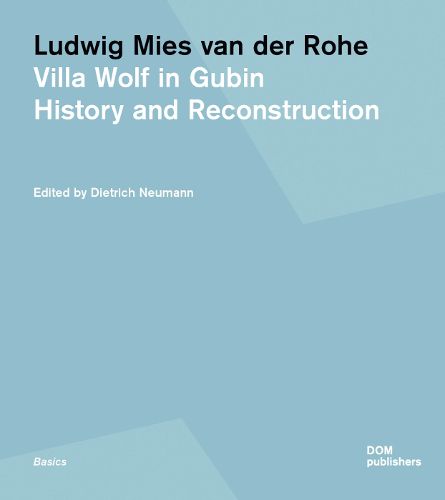Readings Newsletter
Become a Readings Member to make your shopping experience even easier.
Sign in or sign up for free!
You’re not far away from qualifying for FREE standard shipping within Australia
You’ve qualified for FREE standard shipping within Australia
The cart is loading…






Villa Wolf in Guben (now Gubin), built between 1925 and 1927, was Ludwig Mies van der Rohe's first decidedly modern building.
The residential building was destroyed at the end of the Second World War and in the immediate post-war period. The building practice of Mies van der Rohe - who is internationally known for his visionary glass skyscrapers and concrete buildings - remained conventional for a long time. With Villa Wolf, he presented a radical reinterpretation of the upper-class residential building: an open, diagonal sequence of rooms on the garden side, with the cubically-towered areas of the utility rooms and bedrooms next to it. The reception of the building was overshadowed by the great success of Mies van der Rohe's successor buildings, such as the German Pavilion in Barcelona (19281929) and Villa Tugendhat in Brno (19291930). This volume presents the history of Villa Wolf in Gubin and documents the recent excavation of the basement as well as the graphic reconstruction as a prerequisite for the building's reconstruction.
$9.00 standard shipping within Australia
FREE standard shipping within Australia for orders over $100.00
Express & International shipping calculated at checkout
Villa Wolf in Guben (now Gubin), built between 1925 and 1927, was Ludwig Mies van der Rohe's first decidedly modern building.
The residential building was destroyed at the end of the Second World War and in the immediate post-war period. The building practice of Mies van der Rohe - who is internationally known for his visionary glass skyscrapers and concrete buildings - remained conventional for a long time. With Villa Wolf, he presented a radical reinterpretation of the upper-class residential building: an open, diagonal sequence of rooms on the garden side, with the cubically-towered areas of the utility rooms and bedrooms next to it. The reception of the building was overshadowed by the great success of Mies van der Rohe's successor buildings, such as the German Pavilion in Barcelona (19281929) and Villa Tugendhat in Brno (19291930). This volume presents the history of Villa Wolf in Gubin and documents the recent excavation of the basement as well as the graphic reconstruction as a prerequisite for the building's reconstruction.